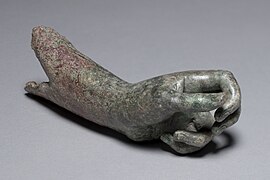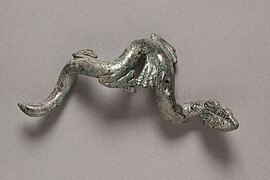ගොනුව:Praxiteles - Apollo the Python-Slayer - 2004.30 - Cleveland Museum of Art.jpg

මෙම පෙරදසුනෙහි විශාලත්වය: 341 × 599 පික්සල. අනෙකුත් විභේදනයන්: 136 × 240 පික්සල | 273 × 480 පික්සල | 437 × 768 පික්සල | 583 × 1,024 පික්සල | 1,165 × 2,048 පික්සල | 3,497 × 6,144 පික්සල.
මුල් ගොනුව (3,497 × 6,144 පික්සල, ගොනු විශාලත්වය: 7.15 මෙ.බ., MIME ශෛලිය: image/jpeg)
ගොනු ඉතිහාසය
එම අවස්ථාවෙහිදී ගොනුව පැවැති ආකාරය නැරඹීමට දිනය/වේලාව මත ක්ලික් කරන්න.
| දිනය/වේලාව | කුඩා-රූපය | මාන | පරිශීලක | පරිකථනය | |
|---|---|---|---|---|---|
| වත්මන් | 16:05, 28 නොවැම්බර් 2021 |  | 3,497 × 6,144 (7.15 මෙ.බ.) | Yann | original HR |
| 10:56, 21 ජනවාරි 2019 |  | 1,935 × 3,400 (536 කි.බ.) | Madreiling | pattypan 18.02 |
ගොනු භාවිතය
පහත දැක්වෙන පිටුව විසින් මෙම ගොනුව භාවිතා කෙරෙයි:
ගෝලීය ගොනු භාවිතය
පහත දැක්වෙන අනෙකුත් විකියන් මගින් මෙම ගොනුව භාවිතා කරයි:
- ca.wikipedia.org හි භාවිතය
- en.wikipedia.org හි භාවිතය
- es.wikipedia.org හි භාවිතය
- fr.wikipedia.org හි භාවිතය
- pt.wikipedia.org හි භාවිතය
- www.wikidata.org හි භාවිතය








